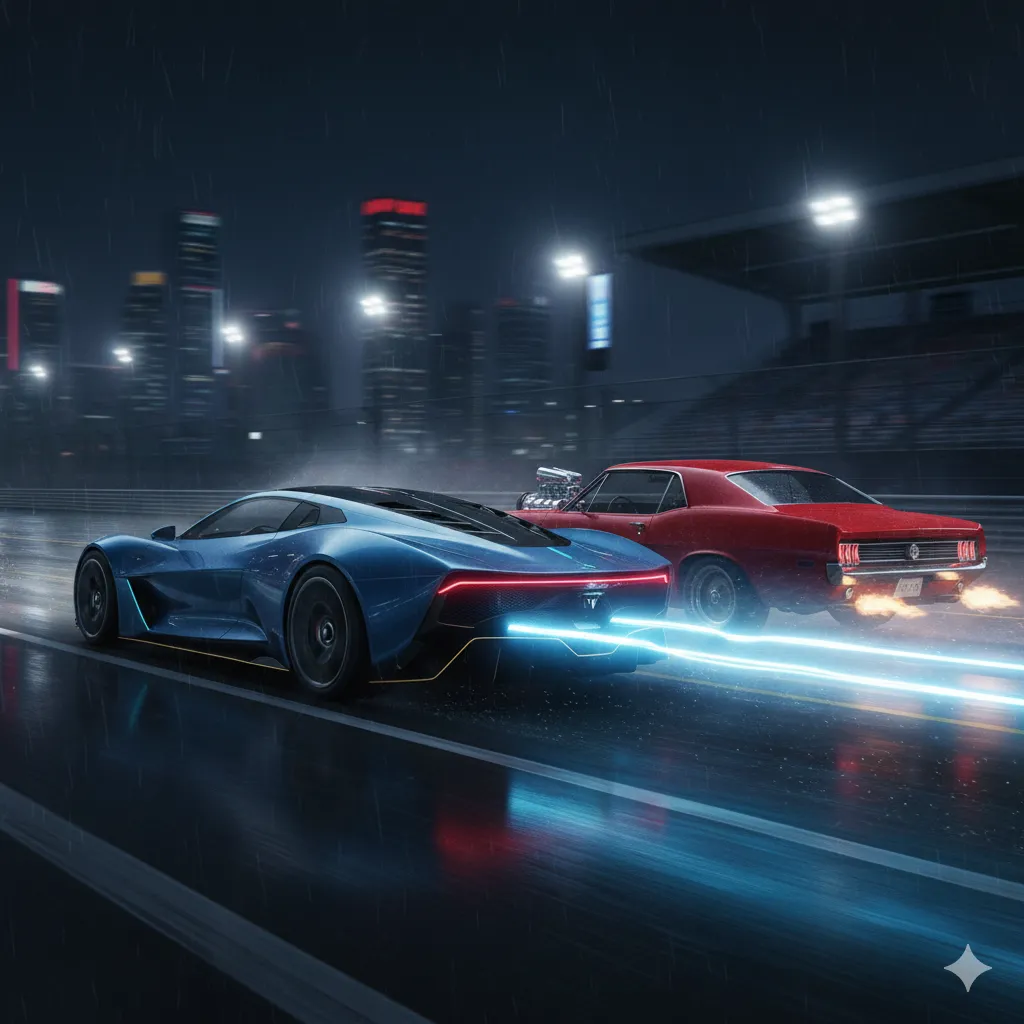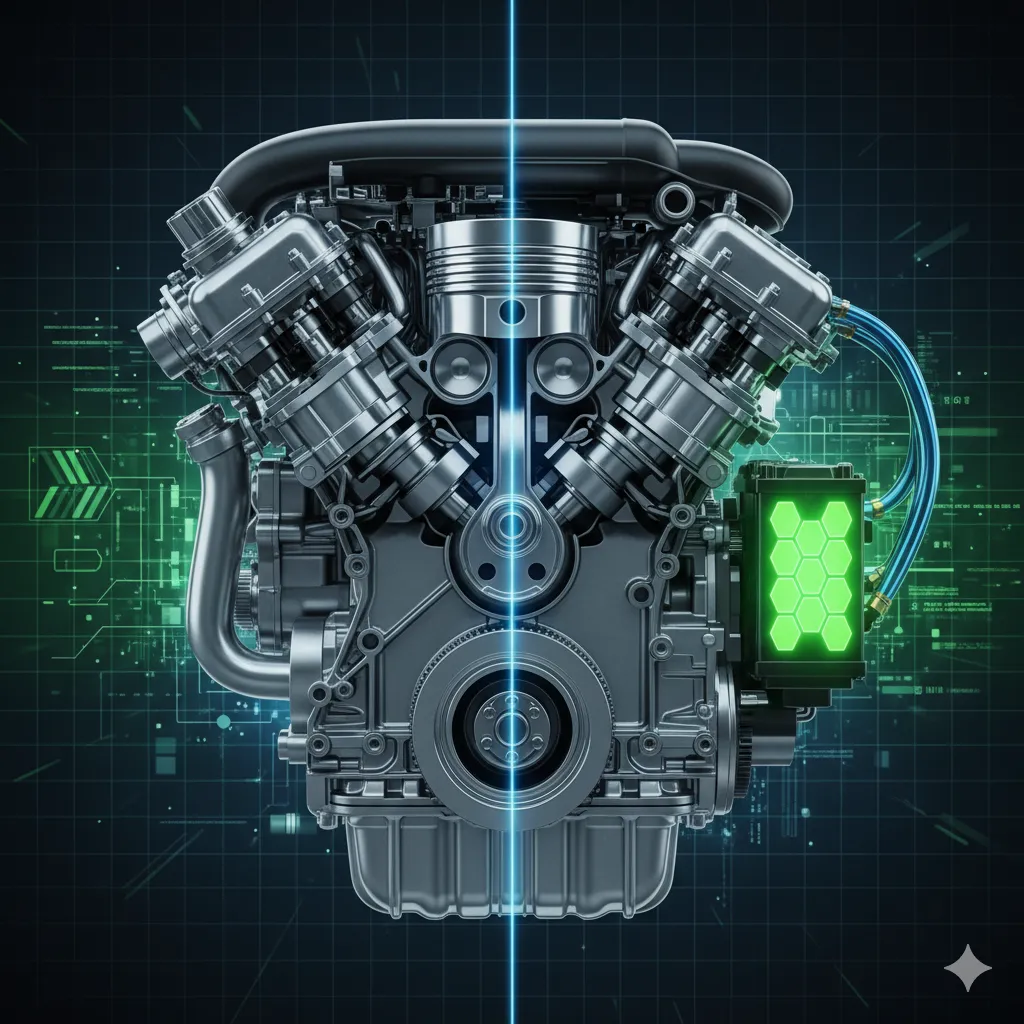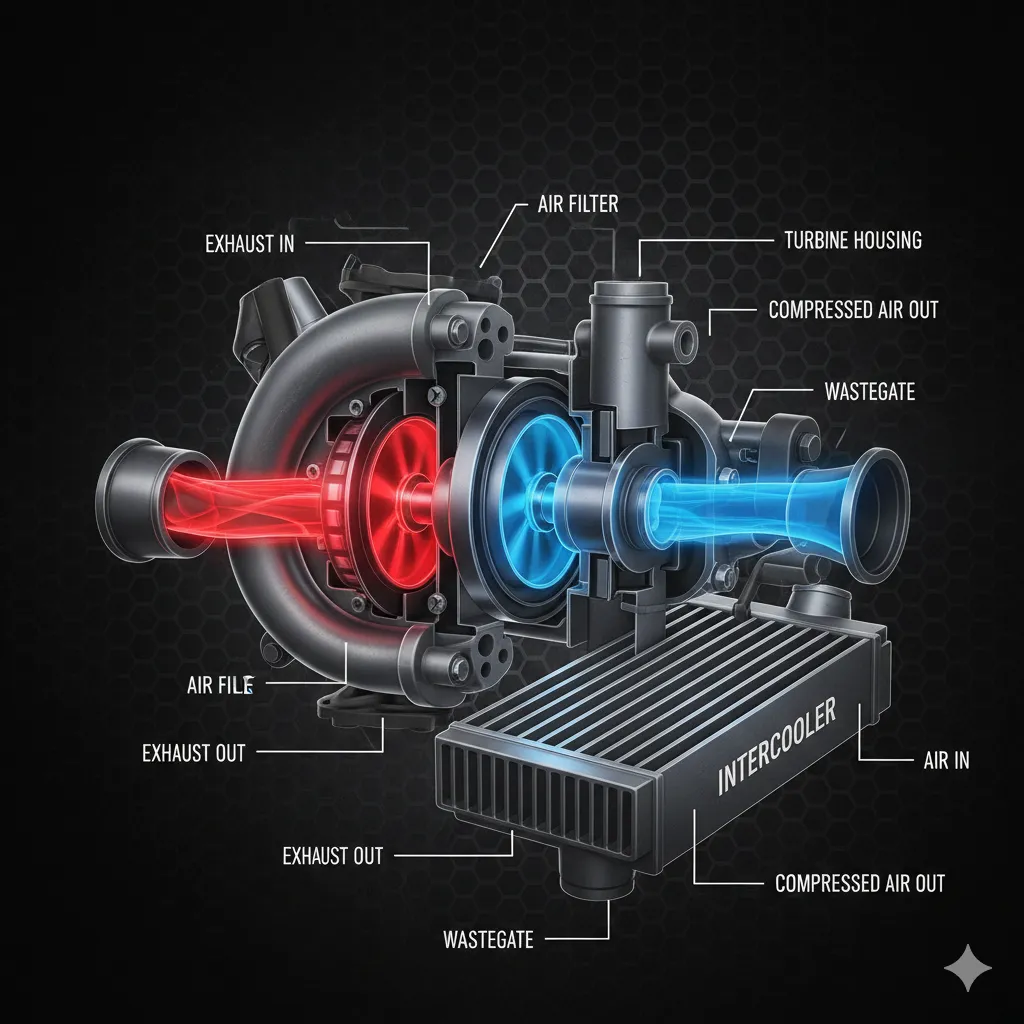
⚡️ EVs vs. Gas Cars: Who Wins in Performance?
Electric Cars vs. Gas: The Performance Showdown
For over a century, the internal combustion engine (ICE), or gas car, reigned supreme, defining the very essence of automotive performance with its roaring engine and intricate gear shifts. However, a new challenger has not just entered the ring—it’s rewriting the rules entirely. The electric car, once a slow, niche oddity, has matured into a powerful, high-performance machine capable of challenging and even humiliating some of the fastest gasoline-powered vehicles on the road.
The question is no longer if electric vehicles (EVs) are fast, but how their performance stacks up against their gas-powered counterparts across various metrics. Who truly wins in the EVs vs. gas cars performance debate? Let's take a deep dive into the engineering, power delivery, and real-world results of this automotive battle.
The Power of Instant Torque: Acceleration
If there is one category where electric cars deliver a near-knockout punch, it is acceleration.
The EV Advantage: Instantaneous Power
The key to an electric car's blistering launch is instant torque. An electric motor generates maximum torque immediately—literally from 0 revolutions per minute (RPM). There is no waiting for an engine to spool up, no complex transmission shifting through gears to find the powerband, and no wasted energy. When you floor the accelerator in an EV, you get the motor's full force, now.
This allows even moderately priced electric models to achieve 0-60 mph times that were once reserved for supercars. Performance EVs, such as the Tesla Model S Plaid or the Lucid Air Sapphire, can hit 60 mph in under 2 seconds, a feat that is almost impossible for a gas car without specialized, complex, and often temperamental engineering.
The Gas Car's Process
In contrast, a gasoline engine must undergo a series of controlled explosions—the internal combustion process—to generate power. This power delivery is rotational and only reaches its peak torque at a specific, higher RPM range. To sustain acceleration, the car needs a multi-speed transmission to keep the engine in this "powerband." This process, while satisfying to the ear, introduces a delay and complexity that EVs simply bypass.
In the 0-60 mph sprint, the clear winner is the electric vehicle, thanks to the fundamental physics of its drivetrain.
Speed and Endurance: Top Speed and Range
While acceleration belongs to the EV, the higher-speed metrics paint a more nuanced picture.
The Top Speed Hurdle
Historically, gas cars held the top speed crown due to their multi-gear transmissions, which could better manage high-speed rotation and heat. Most EVs use a single-speed transmission. While this is simpler and more efficient for the instantaneous torque needed for acceleration, it limits the motor's maximum safe RPM, thus capping the top speed.
However, this is rapidly changing. Performance-focused EVs like the Porsche Taycan utilize a two-speed transmission on the rear axle to overcome this limitation. The world's fastest production cars are still dominated by ICE hypercars (or hybrid hypercars), but top-tier EVs like the Lucid Air Sapphire and the Tesla Model S Plaid have verified top speeds well over 200 mph, proving they can compete even in this rarefied air. For the average driver, where speed limits and safety are the priority, the top speed difference is largely irrelevant.
The Range Factor
Range is the distance a vehicle can travel on a single "tank" or charge. This is a critical metric for long-distance performance.
-
Gas Cars: Can refuel in minutes and often boast cruising ranges of 400+ miles on a full tank.
-
Electric Cars: Modern EVs offer impressive ranges, with many models surpassing 300 miles. However, "re-fueling" (charging) is the key difference. While DC fast-charging has dramatically improved, a cross-country trip still requires more time spent charging than it would take to fill up with gasoline, a concept known as the "charging tax."
Winner: For instantaneous speed and sustained extreme speed, gas cars still hold a slight edge in some hypercar segments, but for everyday driving, EVs are equally capable. In terms of long-distance driving convenience and speed of refueling, gas cars currently maintain a practical advantage, though EV charging infrastructure is constantly improving.
Driving Dynamics: Handling and Center of Gravity
Performance isn't just about straight-line speed; it's also about how a car handles corners and behaves on the road.
The design of an electric car lends itself perfectly to superior handling. The massive, flat battery pack is typically housed on the floor of the chassis. This design provides two significant advantages:
-
Lower Center of Gravity: By placing the heaviest component at the lowest point, the EV achieves a low center of gravity. This dramatically reduces body roll in corners, making the car feel more planted and stable.
-
Ideal Weight Distribution: The battery's central location helps achieve an near-perfect 50/50 weight distribution front-to-back, which is the gold standard for balanced and predictable handling.
Gas cars, with their heavy engine blocks high and forward in the chassis, often struggle to achieve this level of balance without complex and expensive suspension tuning. EVs, even mainstream models, often feel inherently better balanced than their gas equivalents.
Winner: In terms of intrinsic chassis design and stability, electric cars offer a structural advantage that translates to superior handling and a more confident driving experience.
The Noise Factor: Sound and Driver Feel
Performance is a sensory experience, and this is where the two powertrains diverge significantly.
-
Gas Car: The quintessential roar of a V8, the whine of a turbocharger, or the aggressive burble of an exhaust system is a huge part of the performance experience for many drivers. The noise and vibration of the ICE communicate the vehicle's effort and speed.
-
Electric Car: EVs are incredibly quiet, offering a near-silent blast of acceleration. While some manufacturers add synthetic "performance" sounds, the quiet operation fundamentally changes the driving experience. This silence is a performance advantage in urban areas (reduced noise pollution) and offers a calm, focused cabin for the driver, but it lacks the visceral feedback of an engine note.
Winner: This category is purely subjective. For visceral, audible feedback, gas cars win. For quiet, refined, and smooth power delivery, electric cars win.
EVs vs. Gas Cars Performance Summary Table
| Performance Metric | Electric Cars (EVs) | Gas Cars (ICE) | Overall Winner |
| 0-60 mph Acceleration | Instantaneous torque, world-record times possible. | Must shift gears and build RPM to find max power. | EVs |
| Top Speed | Limited by single-speed transmission and heat management (though improving). | Achieved via multi-speed transmission, historically higher. | Gas Cars |
| Handling/Dynamics | Low center of gravity, ideal weight distribution from floor battery. | Higher, forward center of gravity; balance is harder to achieve. | EVs |
| Energy Efficiency | Extremely efficient power delivery; regenerative braking. | Much energy lost to heat and friction; less efficient. | EVs |
| Refueling/Charging Speed | Requires minutes to hours, still a factor on long trips. | Takes minutes, universal and mature infrastructure. | Gas Cars |
Frequently Asked Questions (FAQs)
Q: Do electric cars accelerate faster than gas cars?
A: Yes, typically. Electric motors deliver 100% of their available torque immediately upon pressing the accelerator, leading to much quicker off-the-line acceleration (0-60 mph) than most comparable gas cars, which need time to build up to their peak power band.
Q: What is the main performance benefit of an EV?
A: The main benefit is instantaneous torque and therefore superior acceleration. Additionally, the heavy, low-mounted battery pack gives EVs an exceptionally low center of gravity, leading to improved handling and stability.
Q: Why are gas cars still better than EVs for long road trips?
A: Gas cars still hold an advantage for very long trips due to refueling speed and infrastructure. A gas car can fill up in 5 minutes and immediately be on its way, while even the fastest EV charging still requires 20-40 minutes for a significant charge, leading to a longer overall journey time.
Conclusion: The New Era of Performance
The EVs vs. gas cars performance debate reveals that the competition is no longer about one being fundamentally faster than the other. Instead, it's about two different philosophies of speed.
The gas car offers a traditional, visceral, high-RPM performance defined by mechanical complexity, sound, and a higher top-speed ceiling.
The electric car offers a new-age, seamless, silent, and violently quick performance, defined by the instant, physics-defying rush of pure torque and superior handling dynamics.
For the vast majority of daily driving and even high-performance track use, the electric car's advantages in acceleration and handling make it the dominant performer. While the infrastructure and top-speed records still give the ICE a few points, the EV is quickly closing these gaps, signaling that the future of ultimate automotive performance is almost certainly electric.
External Links:
-
U.S. Department of Energy - Fuel Economy Guide (For official EV vs. Gas efficiency/range data)
-
Motor Trend (or similar authoritative auto review site) - EV vs. ICE Comparisons (To provide context on acceleration tests)
-
Electric Vehicle Association (or similar non-profit) (For a broad, authoritative industry perspective)




